Patents Directory for Dr. Gary K. Michelson — U.S. Published Patents only
340 patents found - Page 16
| Patent | Abstract |
|---|---|
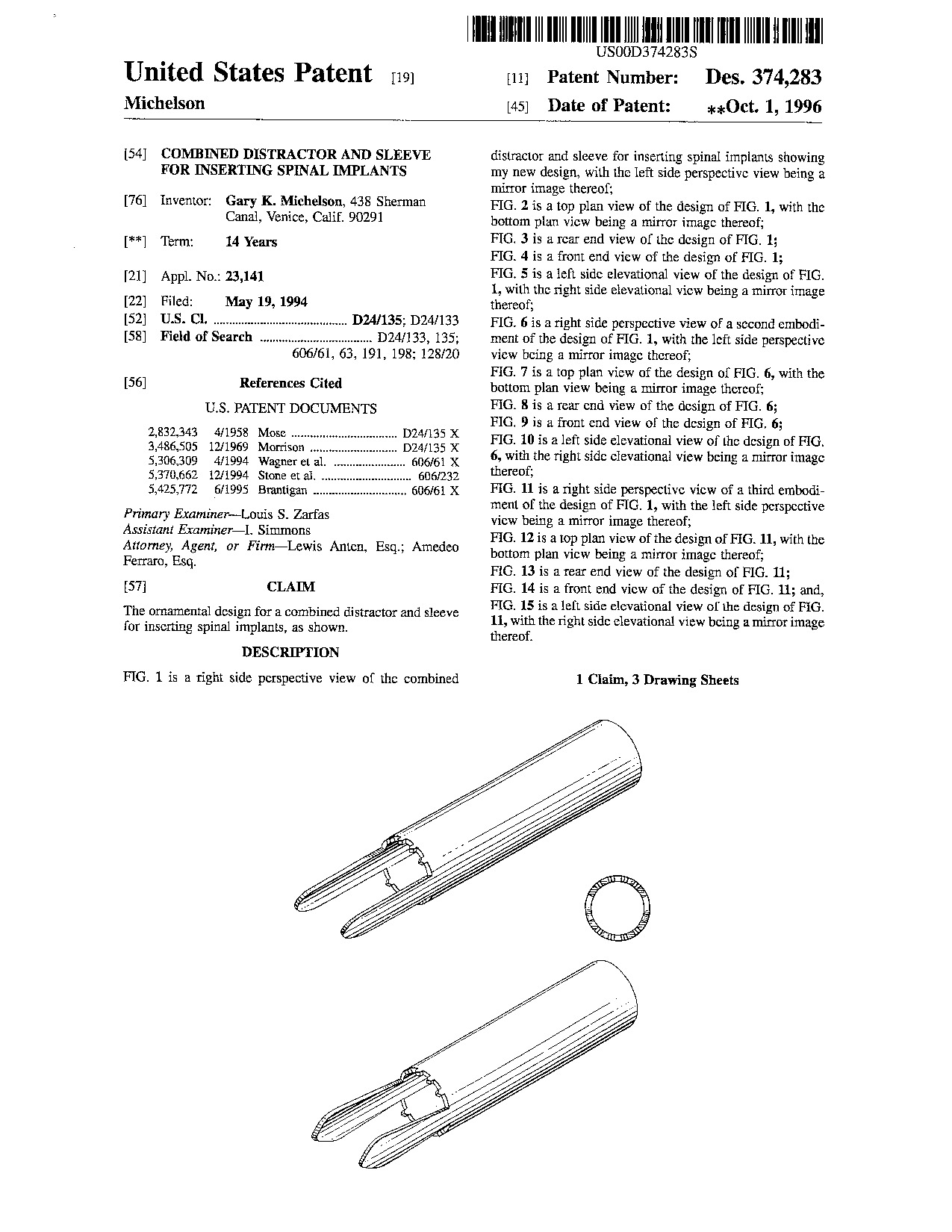 Combined distractor and sleeve for inserting spinal implants - Patent D374,283 Combined distractor and sleeve for inserting spinal implants - Patent D374,283
|
|
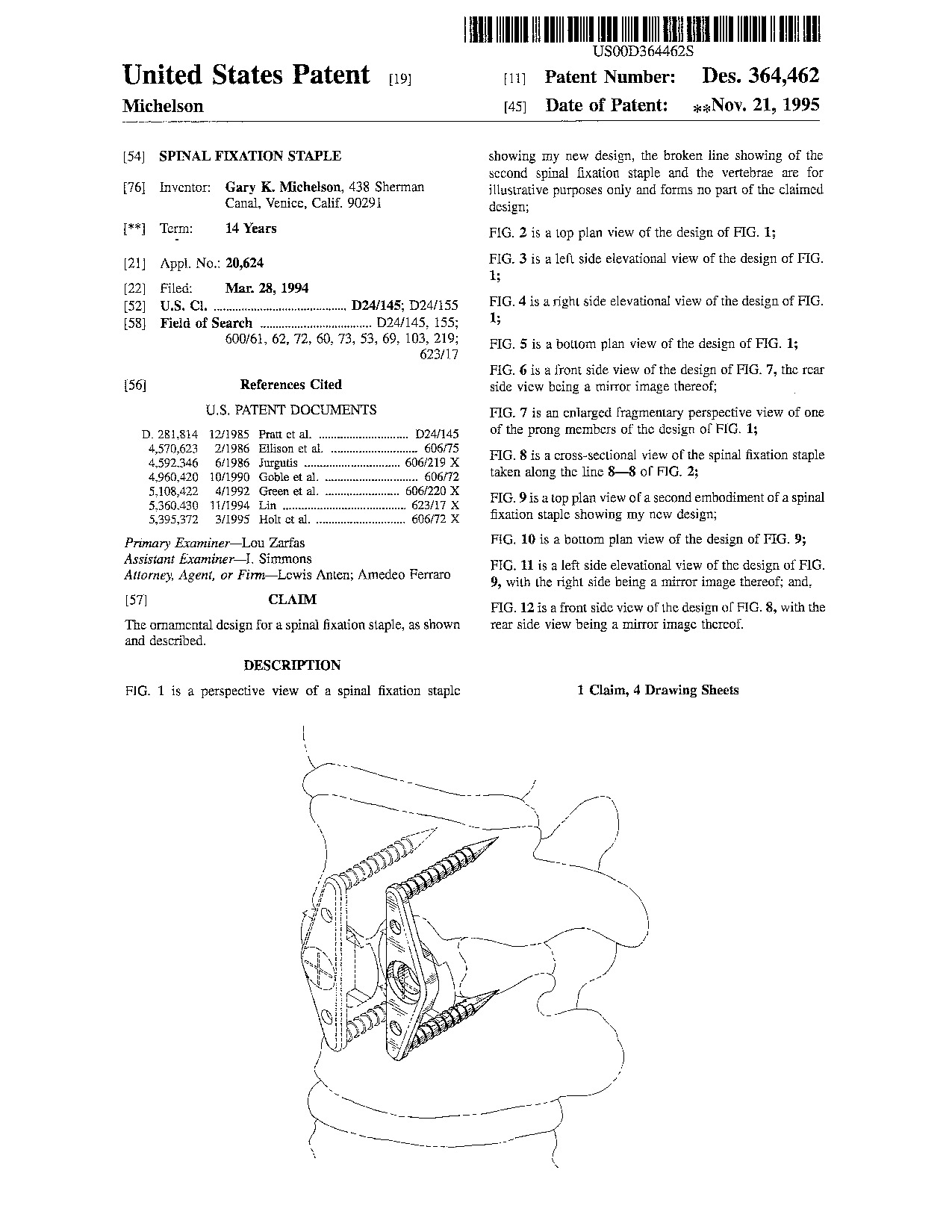 Spinal fixation staple - Patent D364,462 Spinal fixation staple - Patent D364,462
|
|
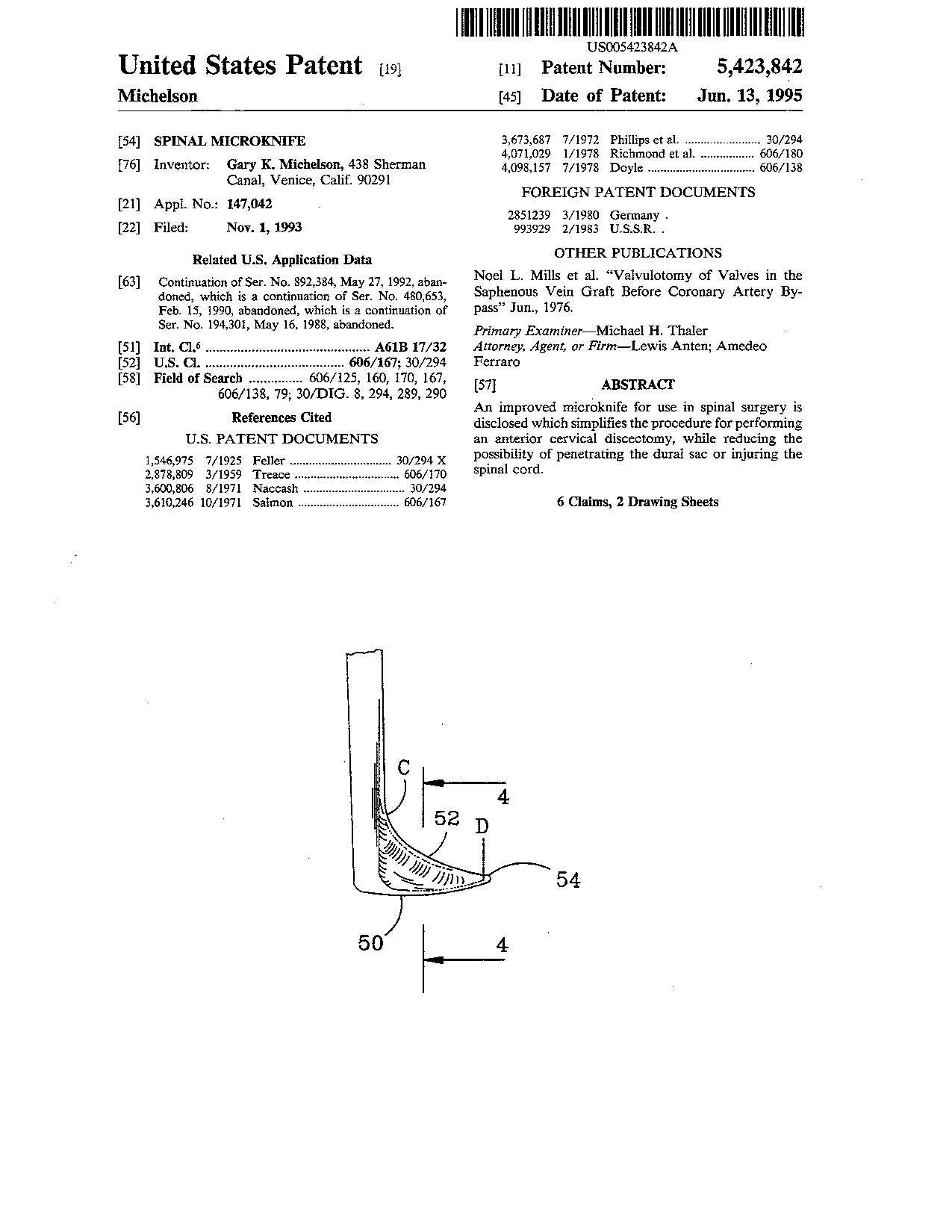 Spinal microknife - Patent 5,423,842 Spinal microknife - Patent 5,423,842
|
An improved microknife for use in spinal surgery is disclosed which simplifies the procedure for performing an anterior cervical discectomy, while reducing the possibility of penetrating the dural sac or injuring the spinal cord.
|
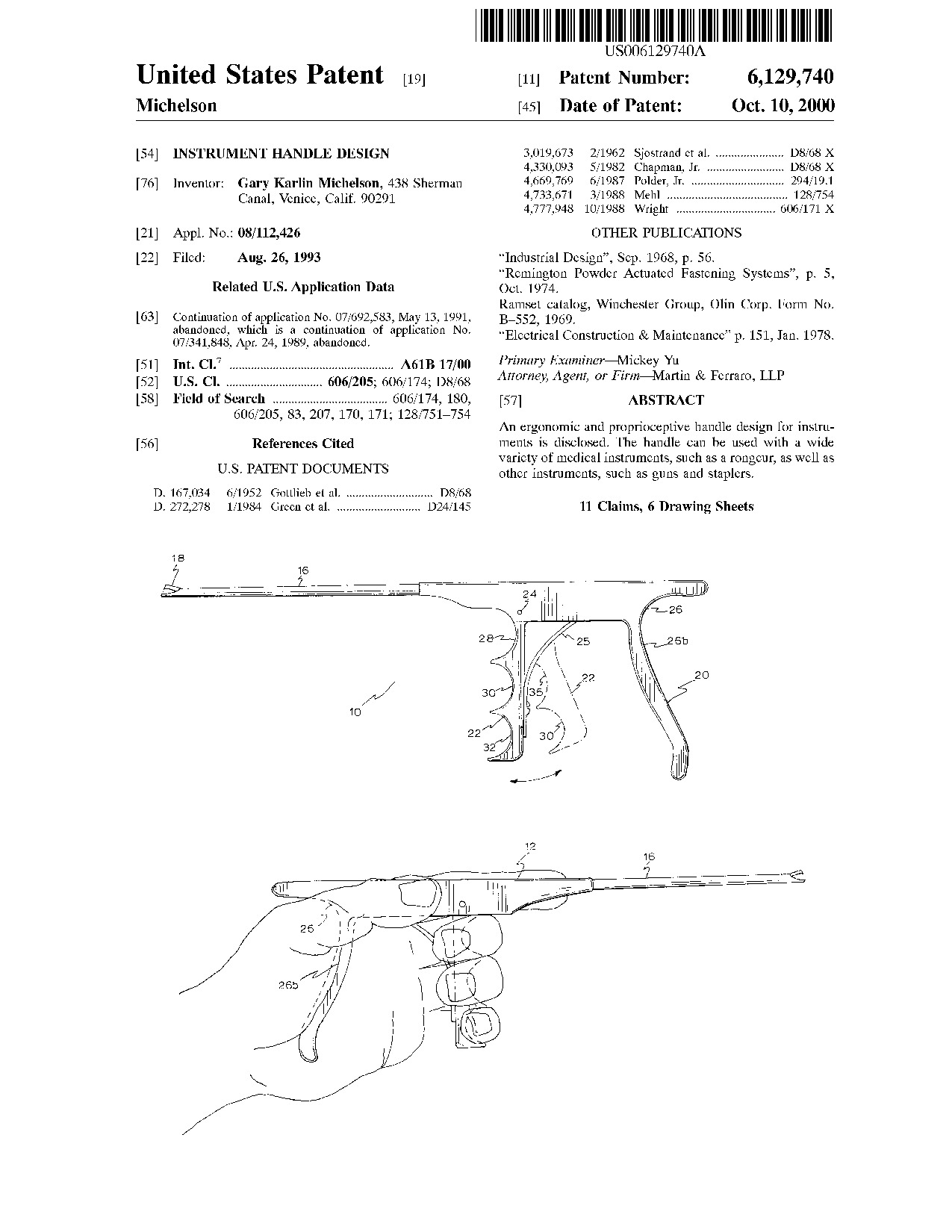 Instrument handle design - Patent 6,129,740 Instrument handle design - Patent 6,129,740
|
An ergonomic and proprioceptive handle design for instruments is disclosed. The handle can be used with a wide variety of medical instruments, such as a rongeur, as well as other instruments, such as guns and staplers.
|
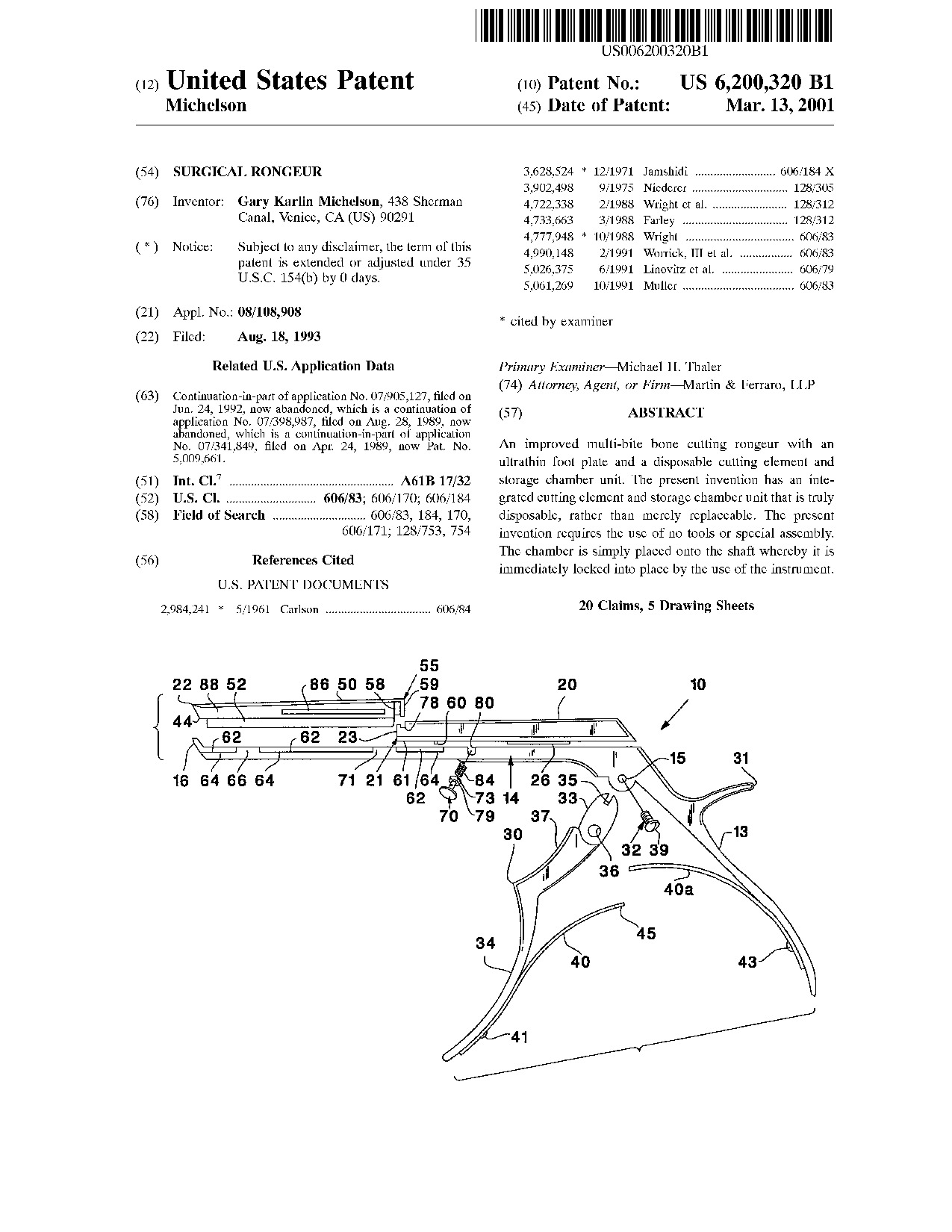 Surgical rongeur - Patent 6,200,320 Surgical rongeur - Patent 6,200,320
|
An improved multi-bite bone cutting rongeur with an ultrathin foot plate and a disposable cutting element and storage chamber unit. The present invention has an integrated cutting element and storage chamber unit that is truly disposable, rather than merely replaceable. The present invention requires the use of no tools or special assembly. The chamber is simply placed onto the shaft whereby it is immediately locked into place by the use of the instrument.
|
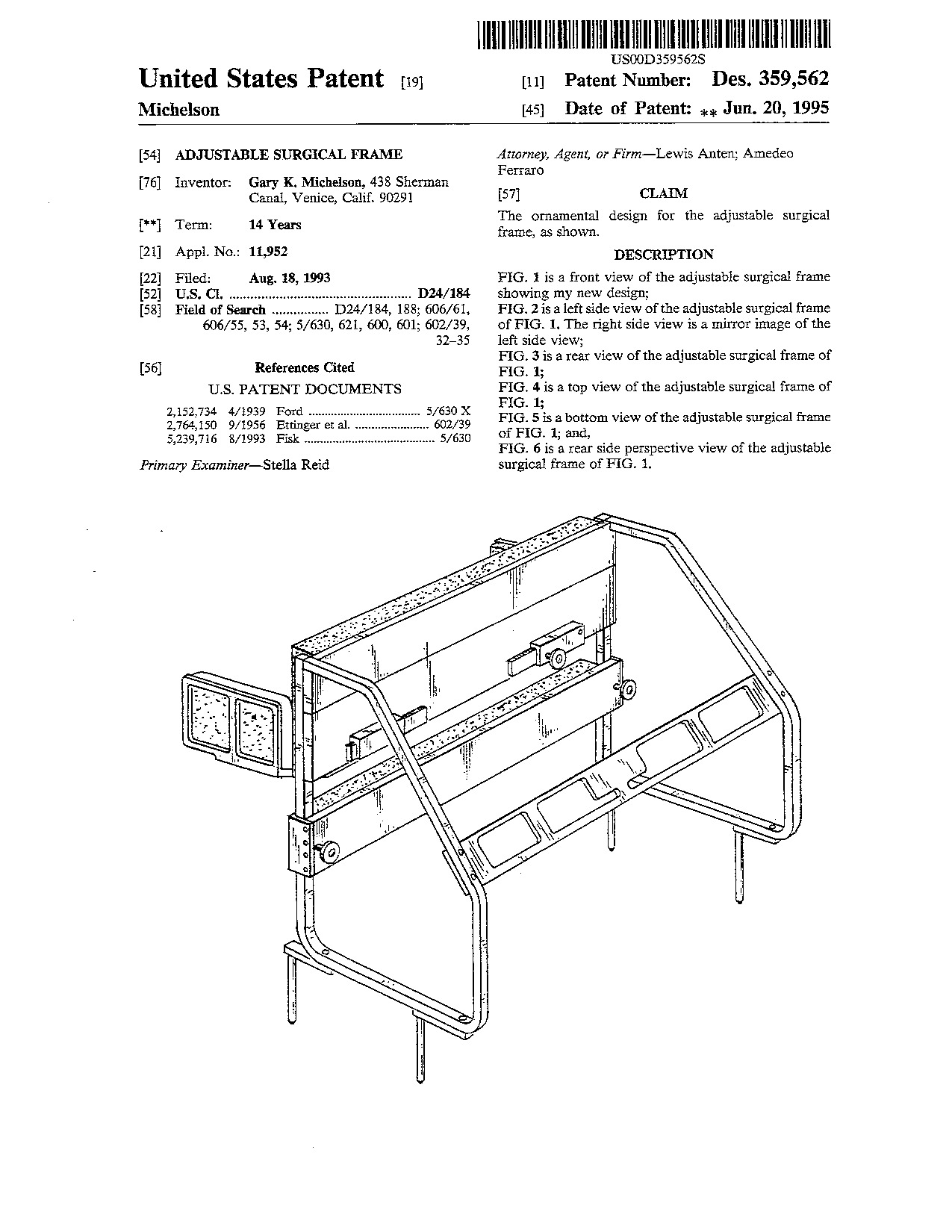 Adjustable surgical frame - Patent D359,562 Adjustable surgical frame - Patent D359,562
|
|
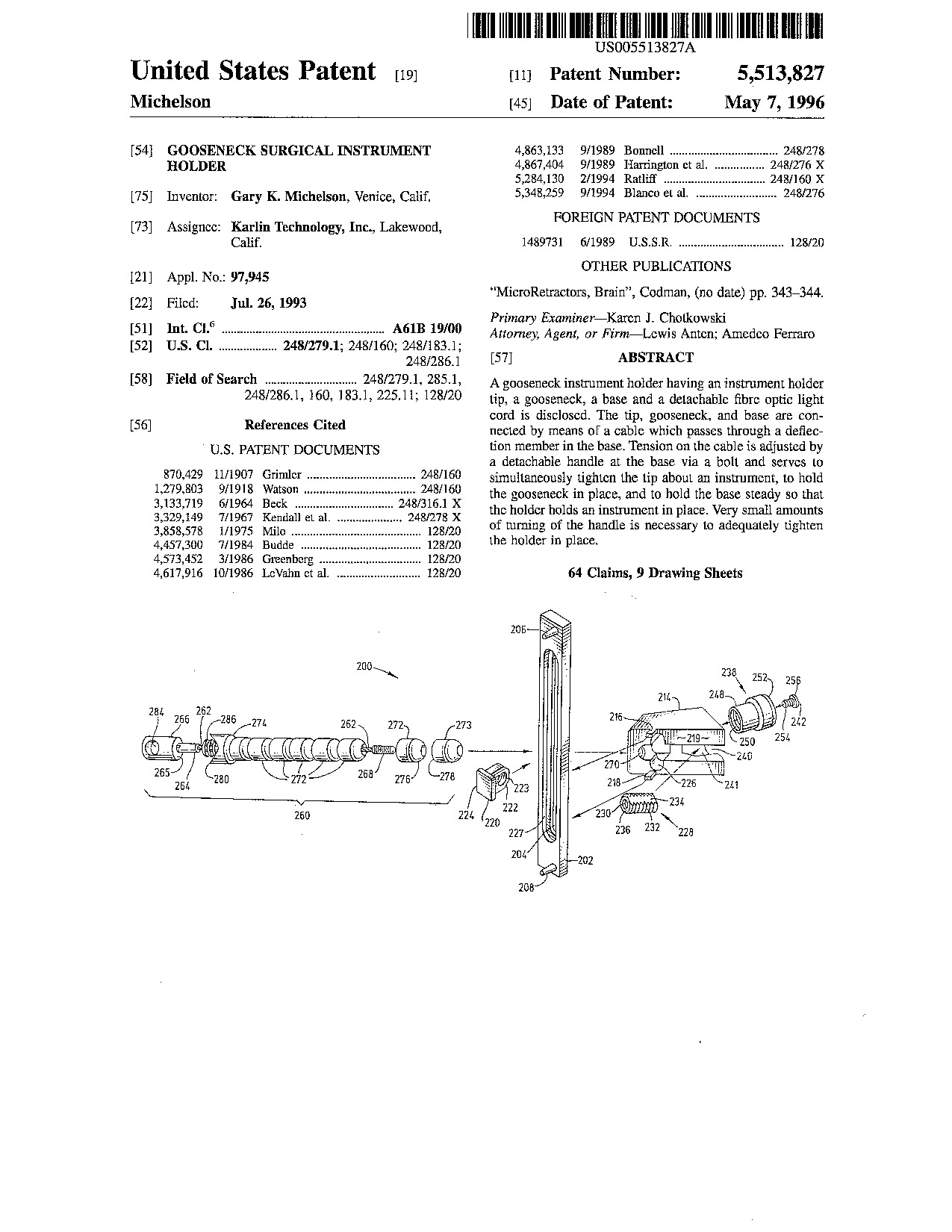 Gooseneck surgical instrument holder - Patent 5,513,827 Gooseneck surgical instrument holder - Patent 5,513,827
|
A gooseneck instrument holder having an instrument holder tip, a gooseneck, a base and a detachable fibre optic light cord is disclosed. The tip, gooseneck, and base are connected by means of a cable which passes through a deflection member in the base. Tension on the cable is adjusted by a detachable handle at the base via a bolt and serves to simultaneously tighten the tip about an instrument, to hold the gooseneck in place, and to hold the base steady so that the holder holds an instrument in place. Very small amounts of turning of the handle is necessary to adequately tighten the holder in place.
|
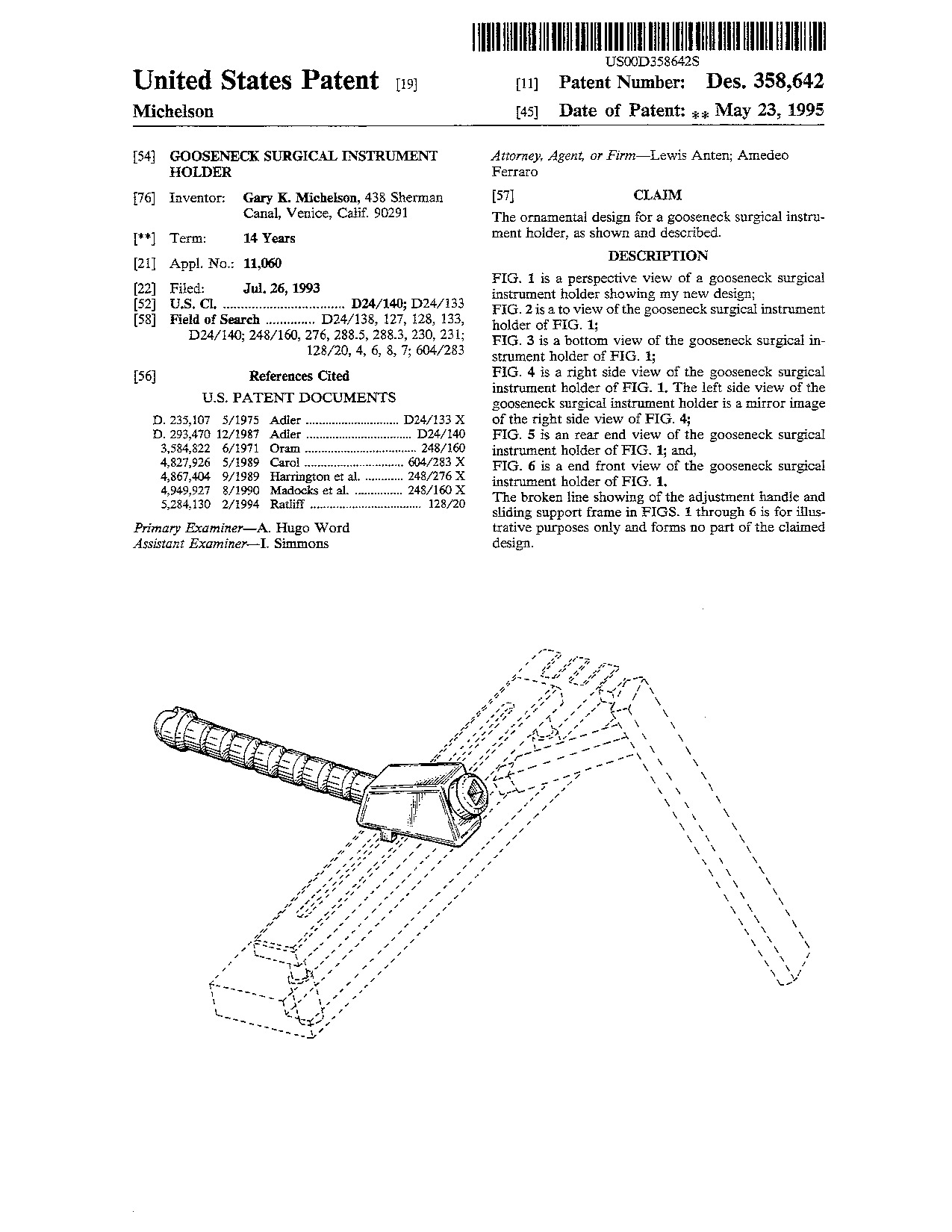 Gooseneck surgical instrument holder - Patent D358,642 Gooseneck surgical instrument holder - Patent D358,642
|
|
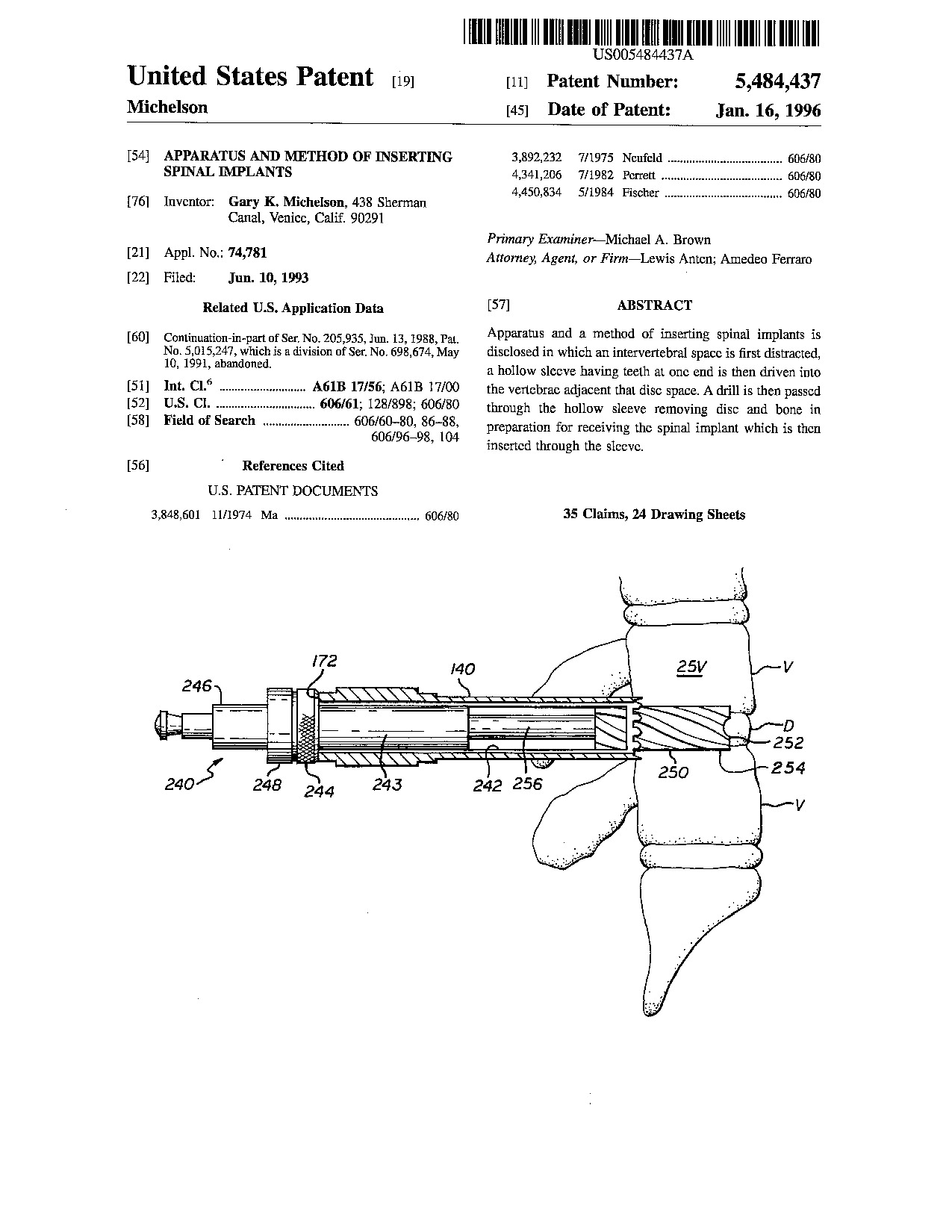 Apparatus and method of inserting spinal implants - Patent 5,484,437 Apparatus and method of inserting spinal implants - Patent 5,484,437
|
Apparatus and a method of inserting spinal implants is disclosed in which an intervertebral space is first distracted, a hollow sleeve having teeth at one end is then driven into the vertebrae adjacent that disc space. A drill is then passed through the hollow sleeve removing disc and bone in preparation for receiving the spinal implant which is then inserted through the sleeve.
|
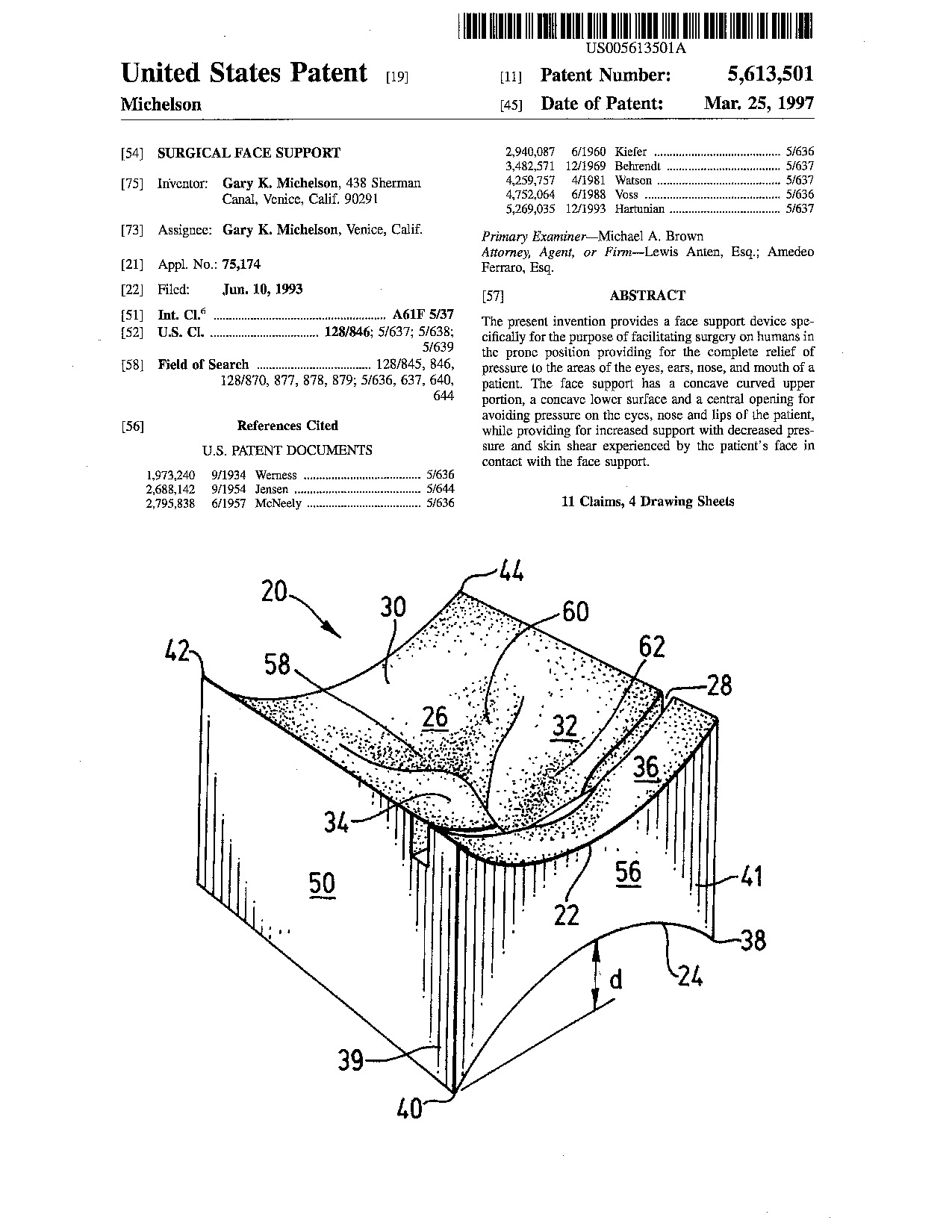 Surgical face support - Patent 5,613,501 Surgical face support - Patent 5,613,501
|
The present invention provides a face support device specifically for the purpose of facilitating surgery on humans in the prone position providing for the complete relief of pressure to the areas of the eyes, ears, nose, and mouth of a patient. The face support has a concave curved upper portion, a concave lower surface and a central opening for avoiding pressure on the eyes, nose and lips of the patient, while providing for increased support with decreased pressure and skin shear experienced by the patient's face in contact with the face support.
|
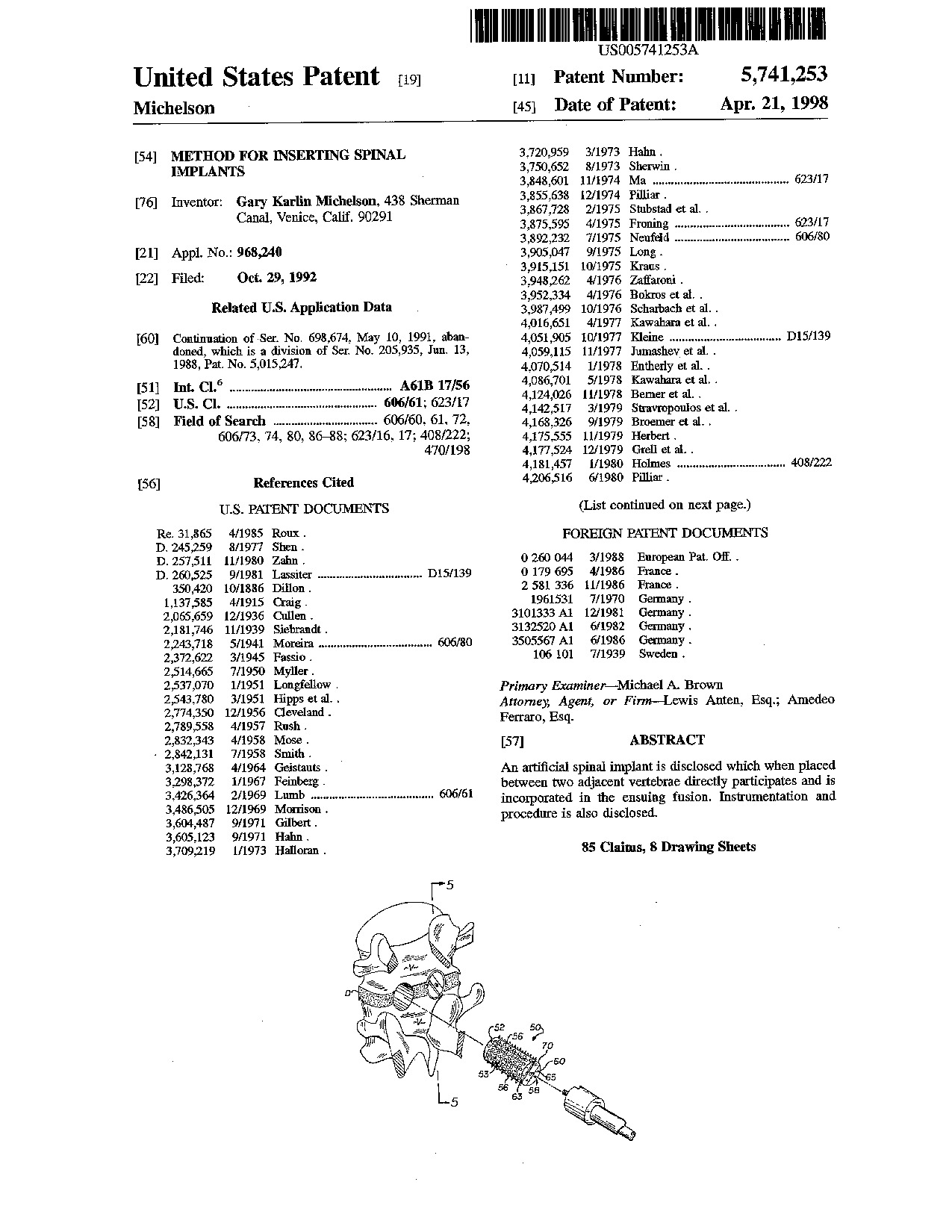 Method for inserting spinal implants - Patent 5,741,253 Method for inserting spinal implants - Patent 5,741,253
|
An artificial spinal implant is disclosed which when placed between two adjacent vertebrae directly participates and is incorporated in the ensuing fusion. Instrumentation and procedure is also disclosed.
|
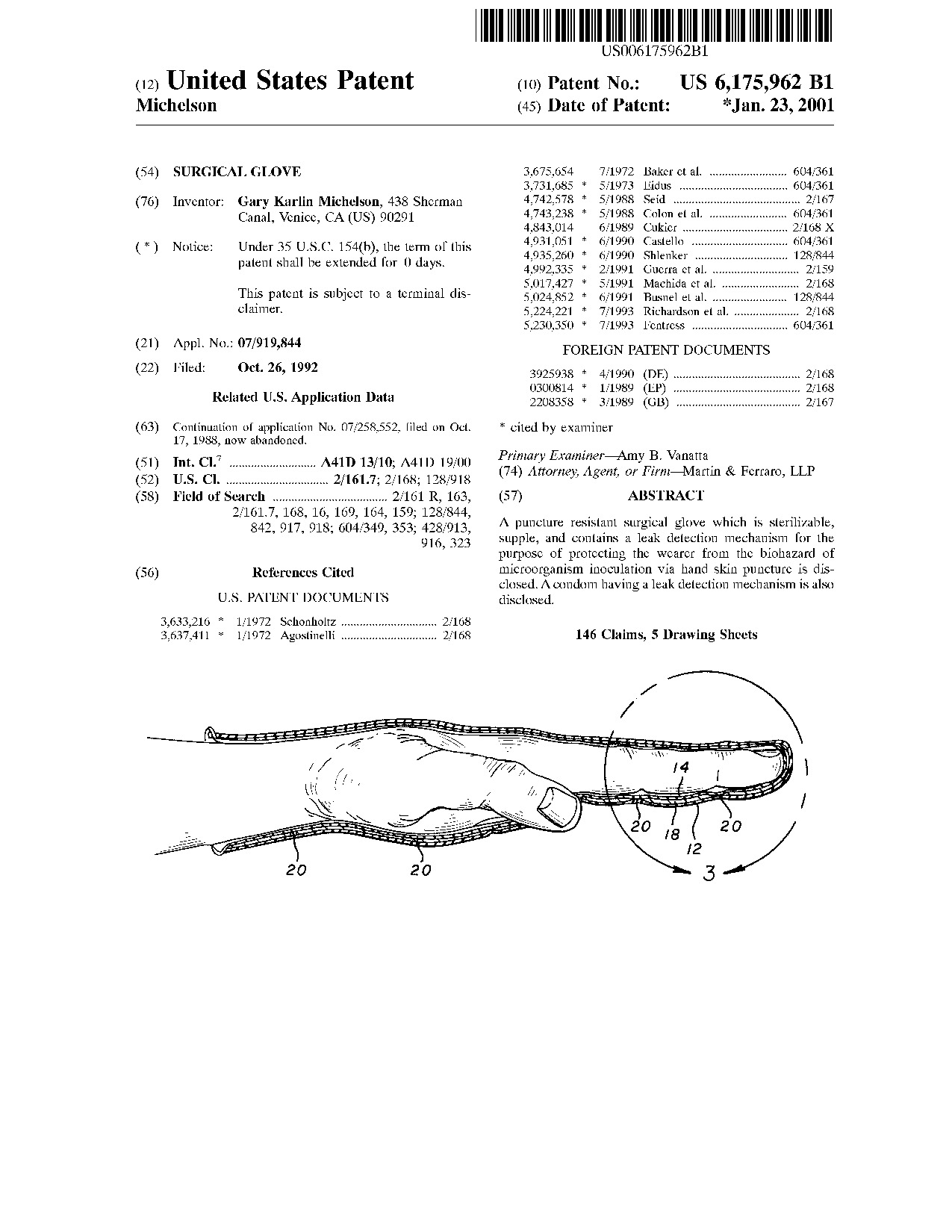 Surgical glove - Patent 6,175,962 Surgical glove - Patent 6,175,962
|
A puncture resistant surgical glove which is sterilizable, supple, and contains a leak detection mechanism for the purpose of protecting the wearer from the biohazard of microorganism inoculation via hand skin puncture is disclosed. A condom having a leak detection mechanism is also disclosed.
|
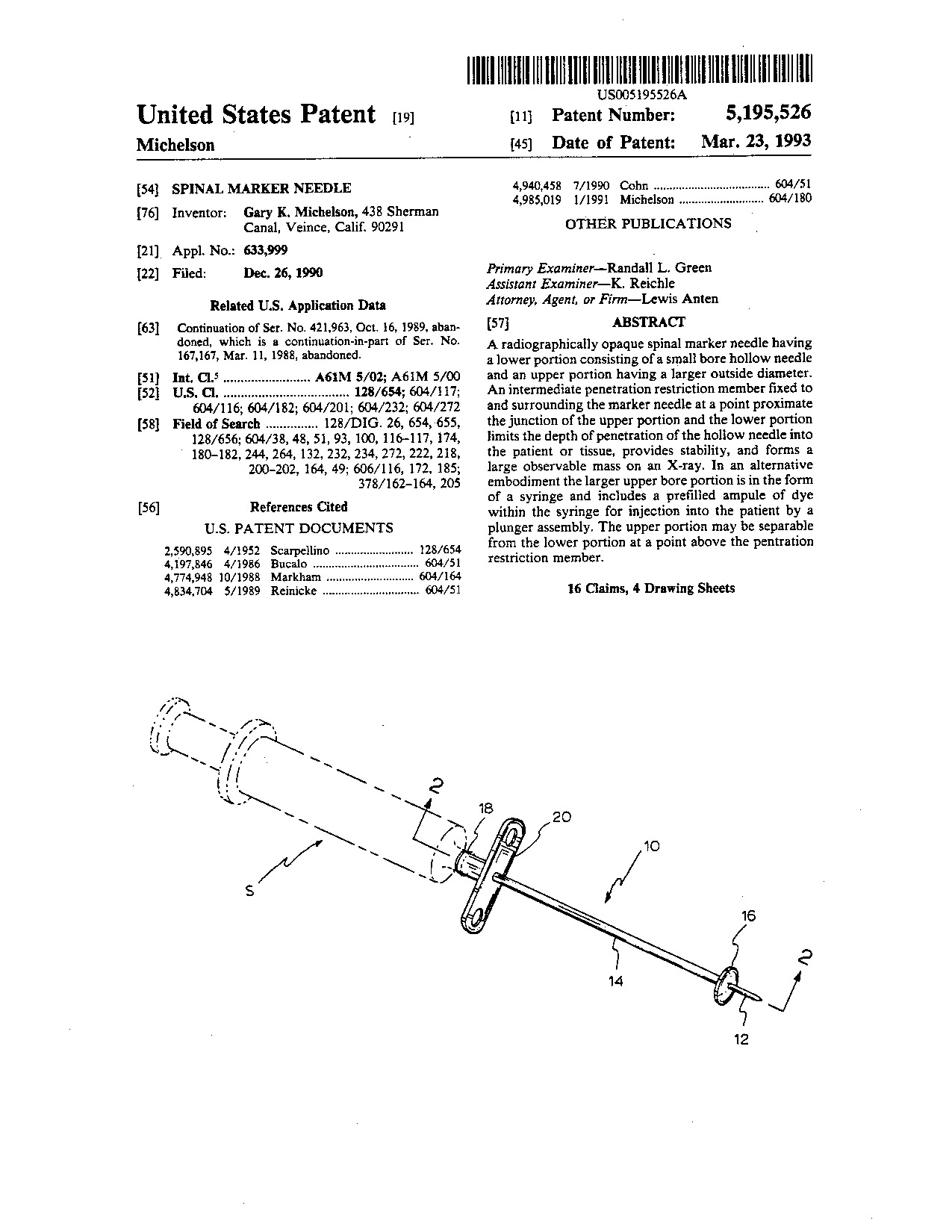 Spinal marker needle - Patent 5,195,526 Spinal marker needle - Patent 5,195,526
|
A radiographically opaque spinal marker needle having a lower portion consisting of a small bore hollow needle and an upper portion having a larger outside diameter. An intermediate penetration restriction member fixed to and surrounding the marker needle at a point proximate the junction of the upper portion and the lower portion limits the depth of penetration of the hollow needle into the patient or tissue, provides stability, and forms a large observable mass on an X-ray. In an alternative embodiment the larger upper bore portion is in the form of a syringe and includes a prefilled ampule of dye within the syringe for injection into the patient by a plunger assembly. The upper portion may be separable from the lower portion at a point above the pentration restriction member.
|
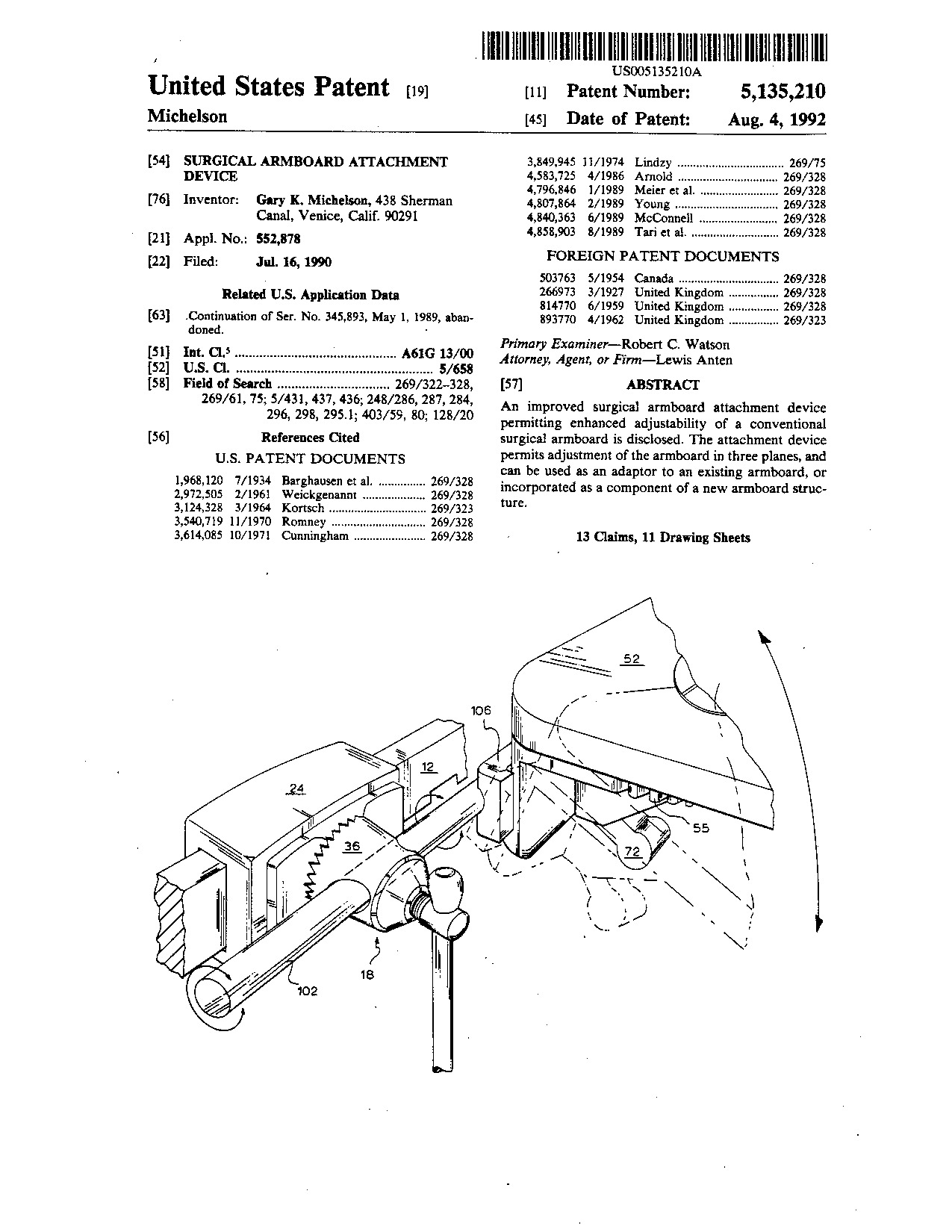 Surgical armboard attachment device - Patent 5,135,210 Surgical armboard attachment device - Patent 5,135,210
|
An improved surgical armboard attachment device permitting enhanced adjustability of a conventional surgical armboard is disclosed. The attachment device permits adjustment of the armboard in three planes, and can be used as an adaptor to an existing armboard, or incorporated as a component of a new armboard structure.
|
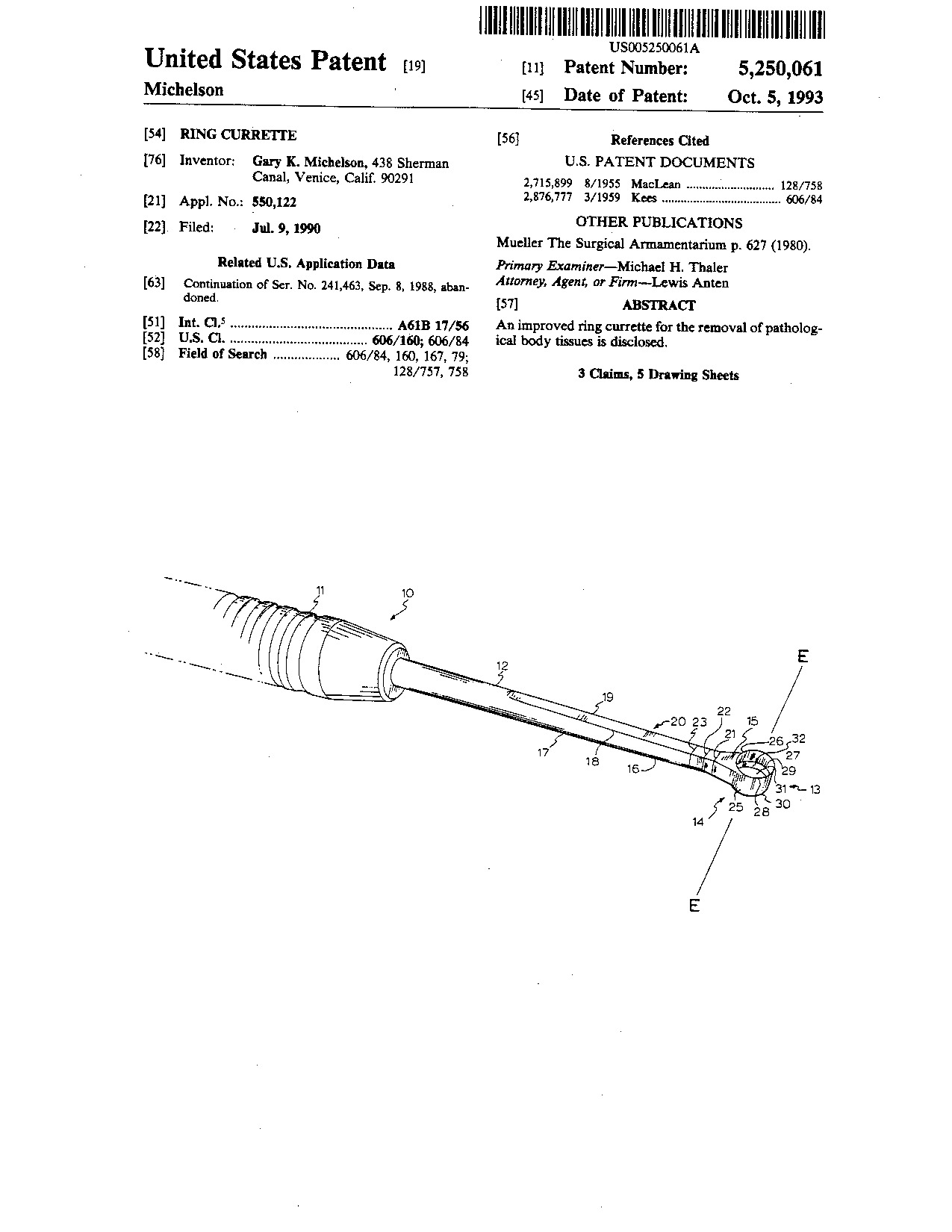 Ring currette - Patent 5,250,061 Ring currette - Patent 5,250,061
|
An improved ring currette for the removal of pathological body tissues is disclosed.
|
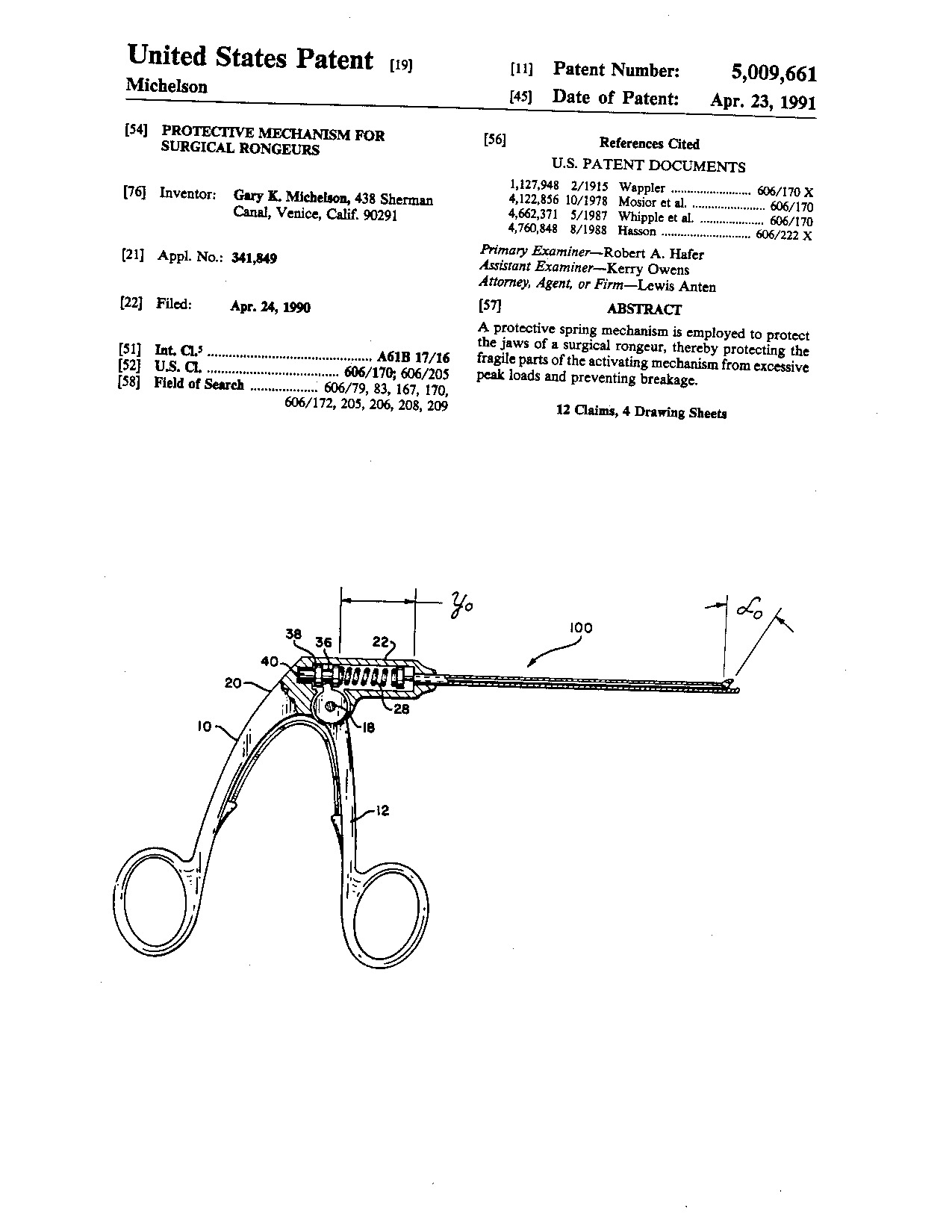 Protective mechanism for surgical rongeurs - Patent 5,009,661 Protective mechanism for surgical rongeurs - Patent 5,009,661
|
A protective spring mechanism is employed to protect the jaws of a surgical rongeur, thereby protecting the fragile parts of the activating mechanism from excessive peak loads and preventing breakage.
|
 Spinal retractor - Patent 5,052,373 Spinal retractor - Patent 5,052,373
|
An improved spinal retractor frame having detachable pairs of blade sets is disclosed in which the blades are self-engaging, automatically aligning, and rapidly attaching. The spinal retractor has a pair of arms which engage blades along the sides of the arms. The blades have a U shaped opening at their upper portions for aligning and engaging with the arms of the retractor as the arms are separated by a ratcheting mechanism.
|
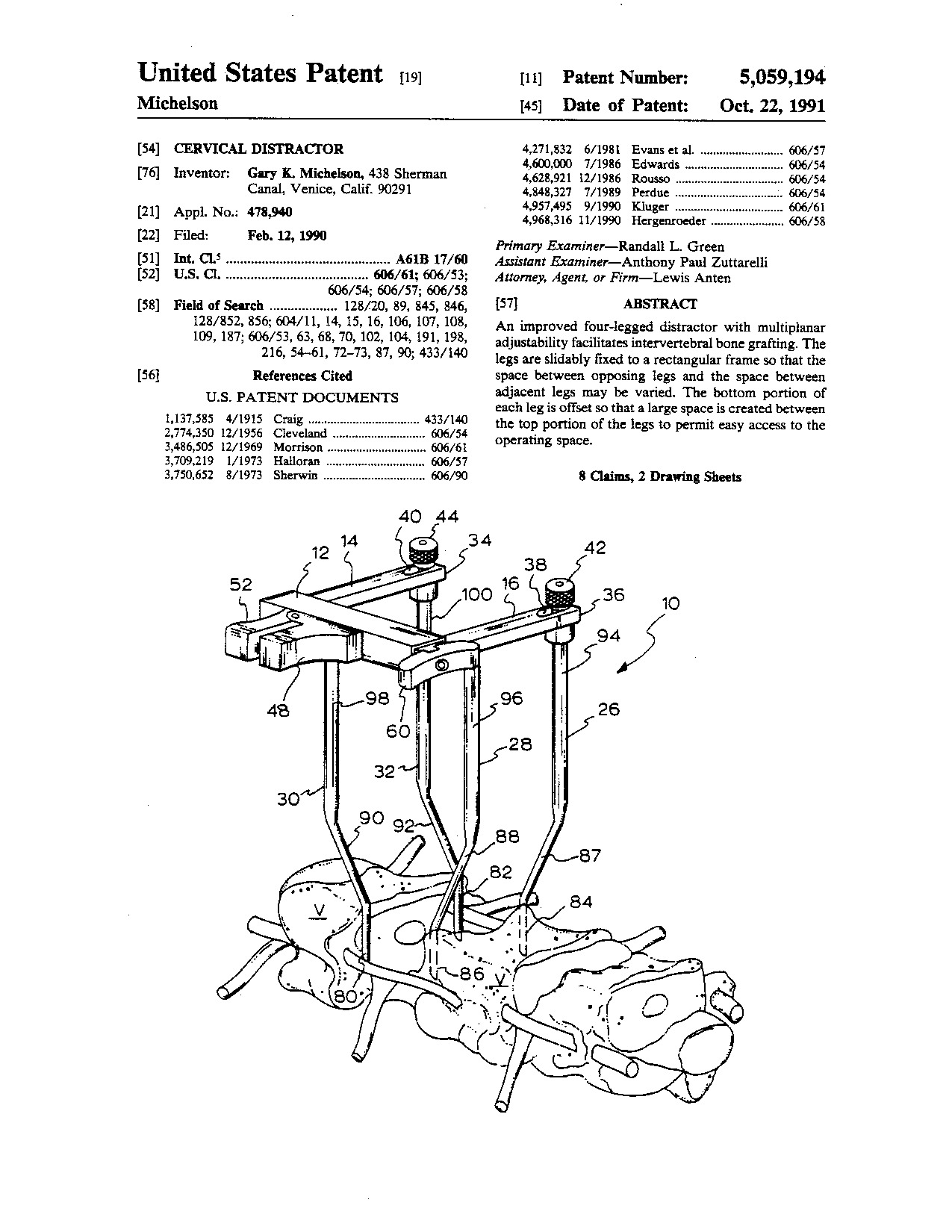 Cervical distractor - Patent 5,059,194 Cervical distractor - Patent 5,059,194
|
An improved four-legged distractor with multiplanar adjustability facilitates intervertebral bone grafting. The legs are slidably fixed to a rectangular frame so that the space between opposing legs and the space between adjacent legs may be varied. The bottom portion of each leg is offset so that a large space is created between the top portion of the legs to permit easy access to the operating space.
|
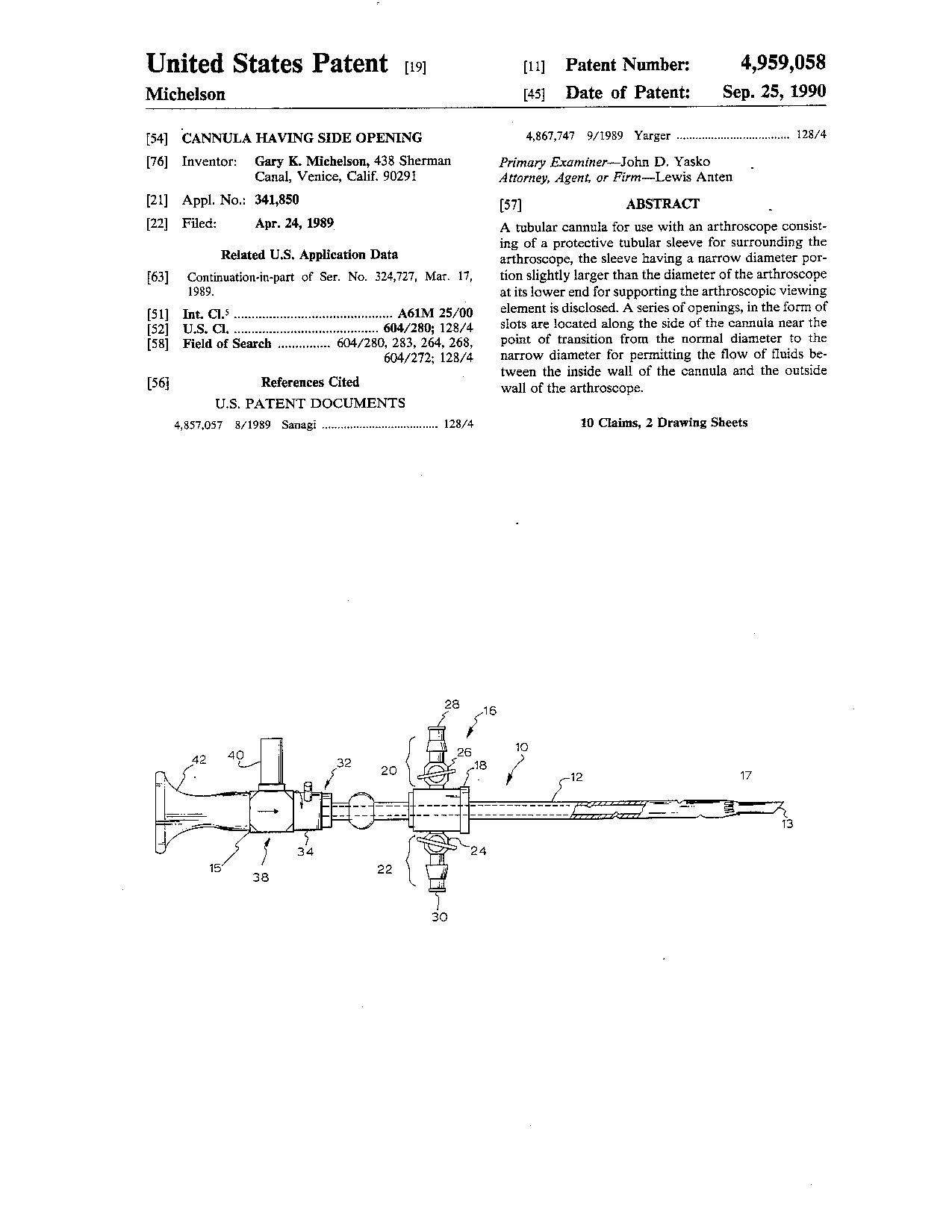 Cannula having side opening - Patent 4,959,058 Cannula having side opening - Patent 4,959,058
|
A tubular cannula for use with an arthroscope consisting of a protective tubular sleeve for surrounding the arthroscope, the sleeve having a narrow diameter portion slightly larger than the diameter of the arthroscope at its lower end for supporting the arthroscopic viewing element is disclosed. A series of openings, in the form of slots are located along the side of the cannula near the point of transition from the normal diameter to the narrow diameter for permitting the flow of fluids between the inside wall of the cannula and the outside wall of the arthroscope.
|
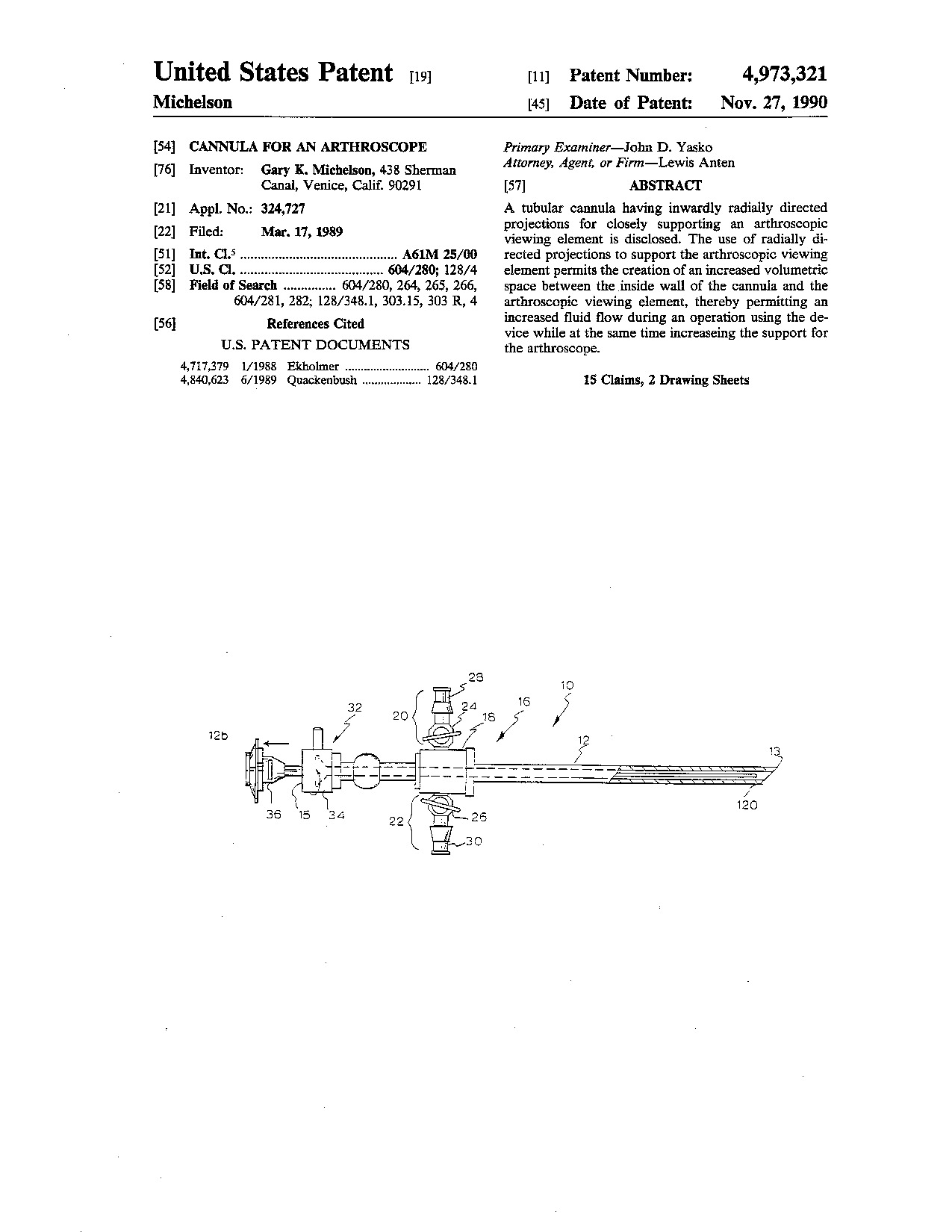 Cannula for an arthroscope - Patent 4,973,321 Cannula for an arthroscope - Patent 4,973,321
|
A tubular cannula having inwardly radially directed projections for closely supporting an arthroscopic viewing element is disclosed. The use of radially directed projections to support the arthroscopic viewing element permits the creation of an increased volumetric space between the inside wall of the cannula and the arthroscopic viewing element, thereby permitting an increased fluid flow during an operation using the device while at the same time increaseing the support for the arthroscope.
|
